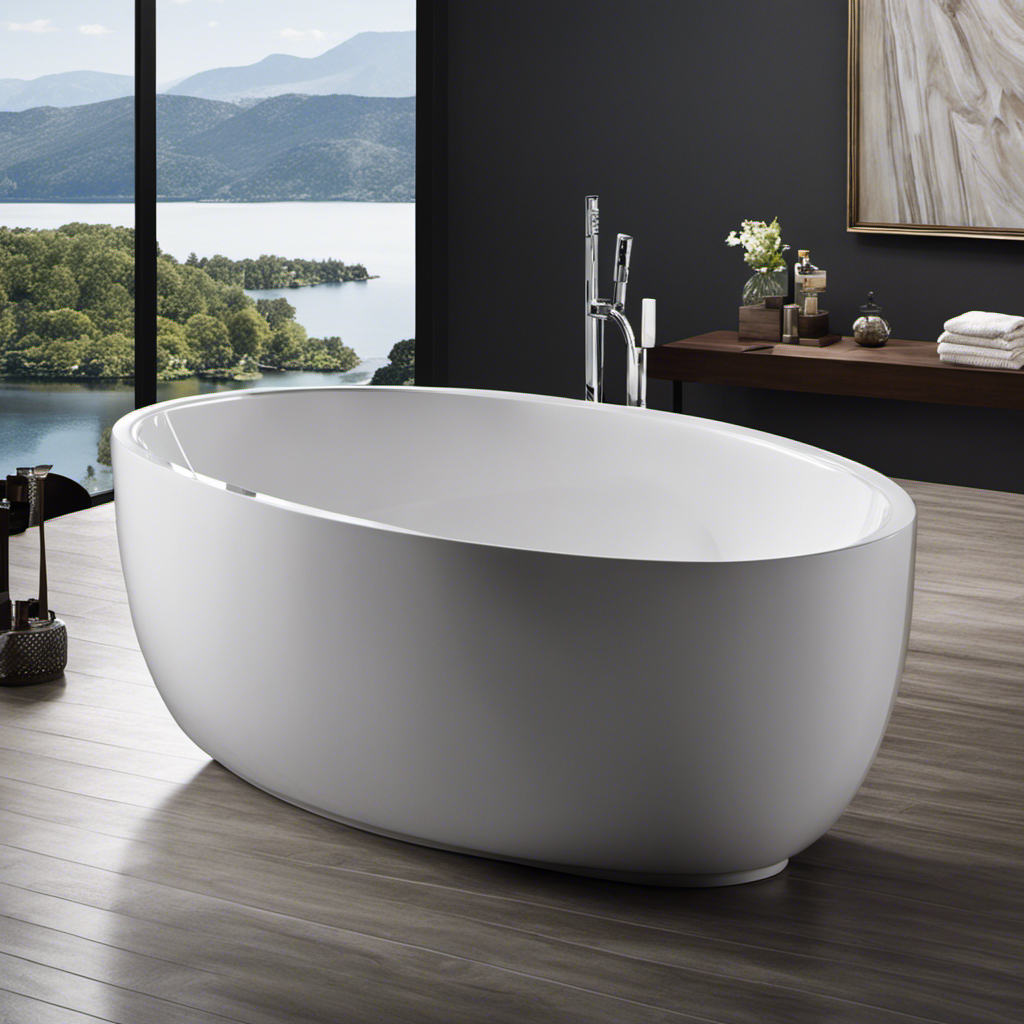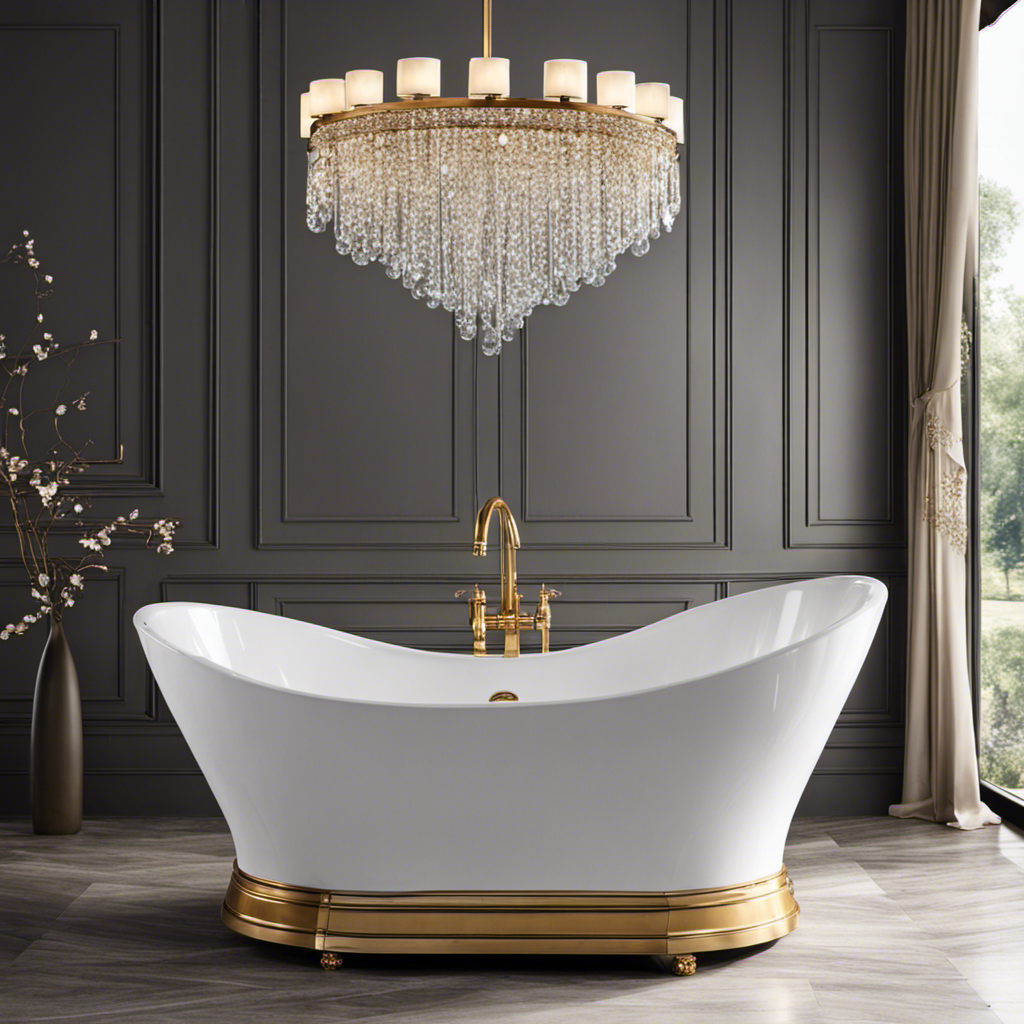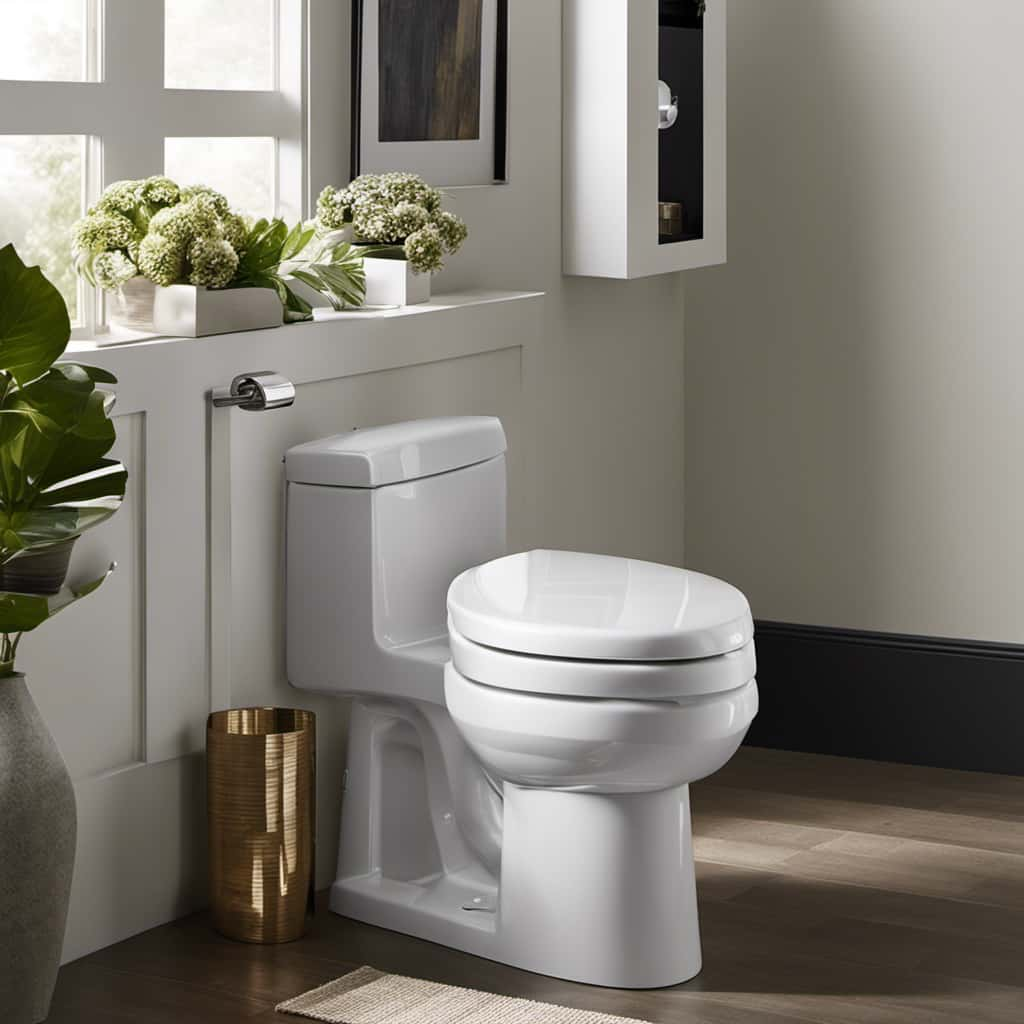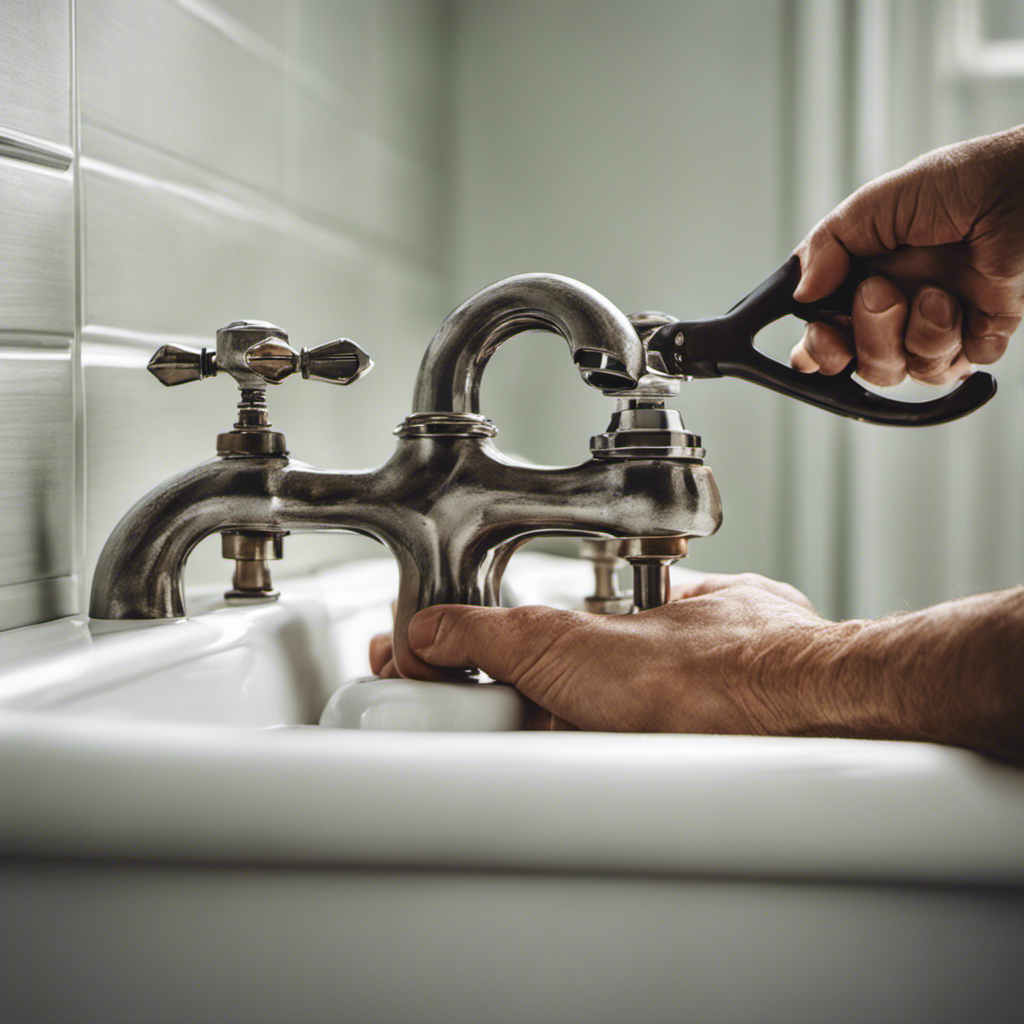As a curious homeowner, have you ever wondered just how many liters your bathtub can hold? In this article, I will dive into the depths of bathtub capacity, exploring the factors that affect volume and how to measure it accurately.
From standard sizes to unique variations, we’ll cover it all. By the end, you’ll have the knowledge to easily convert bathtub capacity into liters, leaving you with a newfound understanding of this essential bathroom fixture.
Key Takeaways
- Standard bathtubs typically have a capacity of around 200 liters.
- Bathtub materials, such as acrylic, fiberglass, cast iron, and porcelain, can affect the volume and size of the bathtub.
- Measuring the bathtub’s capacity can be done by filling it with water and pouring it into a measuring device or by calculating its volume based on its dimensions.
- Converting bathtub capacity to liters can be done by multiplying the number of gallons by a conversion factor of 3.78541.
Standard Bathtub Capacity
The standard bathtub capacity is typically around 200 liters.
When it comes to bathtub materials, there are various options available in the market. Common materials used for bathtubs include acrylic, fiberglass, cast iron, and porcelain.
Acrylic bathtubs are lightweight, durable, and easy to clean. Fiberglass bathtubs are also lightweight and cost-effective. Cast iron bathtubs are known for their sturdiness and heat retention properties. Porcelain bathtubs are elegant and offer a classic look to the bathroom.
In terms of bathtub dimensions, standard bathtubs are usually around 60 inches in length, 30 inches in width, and 14-20 inches in depth. These dimensions may vary depending on the style and design of the bathtub.
Factors Affecting Bathtub Volume
You can determine the volume of a bathtub by considering various factors. The material of the bathtub is one such factor that affects its volume. Different bathtub materials, such as acrylic, cast iron, and fiberglass, have different thicknesses, which can impact the overall volume.
Additionally, the shape of the bathtub plays a crucial role in determining its volume. A rectangular bathtub will generally have a larger volume compared to a corner bathtub due to its larger dimensions. A round bathtub, on the other hand, may have a smaller volume due to its curved shape.
These factors should be taken into account when measuring the capacity of a bathtub.
In the subsequent section, I will explain how to measure bathtub capacity accurately.
How to Measure Bathtub Capacity
To accurately measure the capacity of your bathtub, start by filling it with water until it reaches a comfortable level. Then, using a measuring cup or a container with known volume, carefully pour the water from the bathtub into the measuring device. Keep track of how many liters of water you have poured. This will give you an approximation of the bathtub’s capacity.
Another method is to measure the dimensions of your bathtub using a tape measure. Multiply the length, width, and height of the bathtub in meters to calculate its volume in cubic meters. Finally, convert the cubic meters to liters by multiplying the volume by 1000.
By following these steps, you can accurately determine the capacity of your bathtub.
Now, let’s explore the different types of bathtub sizes.
Different Types of Bathtub Sizes
For a variety of options, check out the different sizes of bathtubs available. When it comes to bathtubs, the size can greatly impact the overall experience. Here are three key factors to consider:
-
Bathtub materials and their impact on size: The material of the bathtub can affect its size. For example, acrylic tubs are often available in larger sizes due to their lightweight nature, while cast iron tubs tend to be smaller and more compact.
-
Customizable options for bathtub sizes: Many manufacturers offer customizable options for bathtub sizes. This allows you to choose a size that fits perfectly in your bathroom space. From small corner tubs to large soaking tubs, there is a wide range of options to suit your needs.
-
Consider your personal preferences: It’s important to consider your personal preferences when selecting a bathtub size. Do you prefer a cozy and compact tub or a spacious soaking tub? Take into account your bathing habits and the available space in your bathroom to choose the perfect size for you.
With these factors in mind, you can select the ideal bathtub size that meets your needs and enhances your bathing experience.
Converting Bathtub Capacity to Liters
Converting the capacity of a bathtub to liters can be easily done using a simple formula. It is important to know the bathtub capacity in liters as it allows for accurate measurements and comparisons.
To convert the bathtub capacity from gallons to liters, you can use the conversion factor of 3.78541. Simply multiply the number of gallons by this conversion factor to get the equivalent capacity in liters.
For example, if a bathtub has a capacity of 50 gallons, multiplying it by 3.78541 gives you a capacity of approximately 189.27 liters.
Knowing the bathtub capacity in liters is particularly useful for determining the amount of water needed for filling it, as well as for ensuring that the water heater can accommodate the required capacity.
Conclusion
In conclusion, determining the capacity of a bathtub is crucial for those who seek to indulge in luxurious bathing experiences or simply want to avoid overflowing disasters.
By understanding the standard capacity, considering various factors, and using a measuring technique, one can accurately calculate the volume of their bathtub.
Moreover, being aware of the different types and sizes of bathtubs allows individuals to choose the perfect fit for their needs.
So, next time you step into your bathtub, take a moment to appreciate the precise science behind its liters of water, and enjoy your bathing experience to the fullest.










